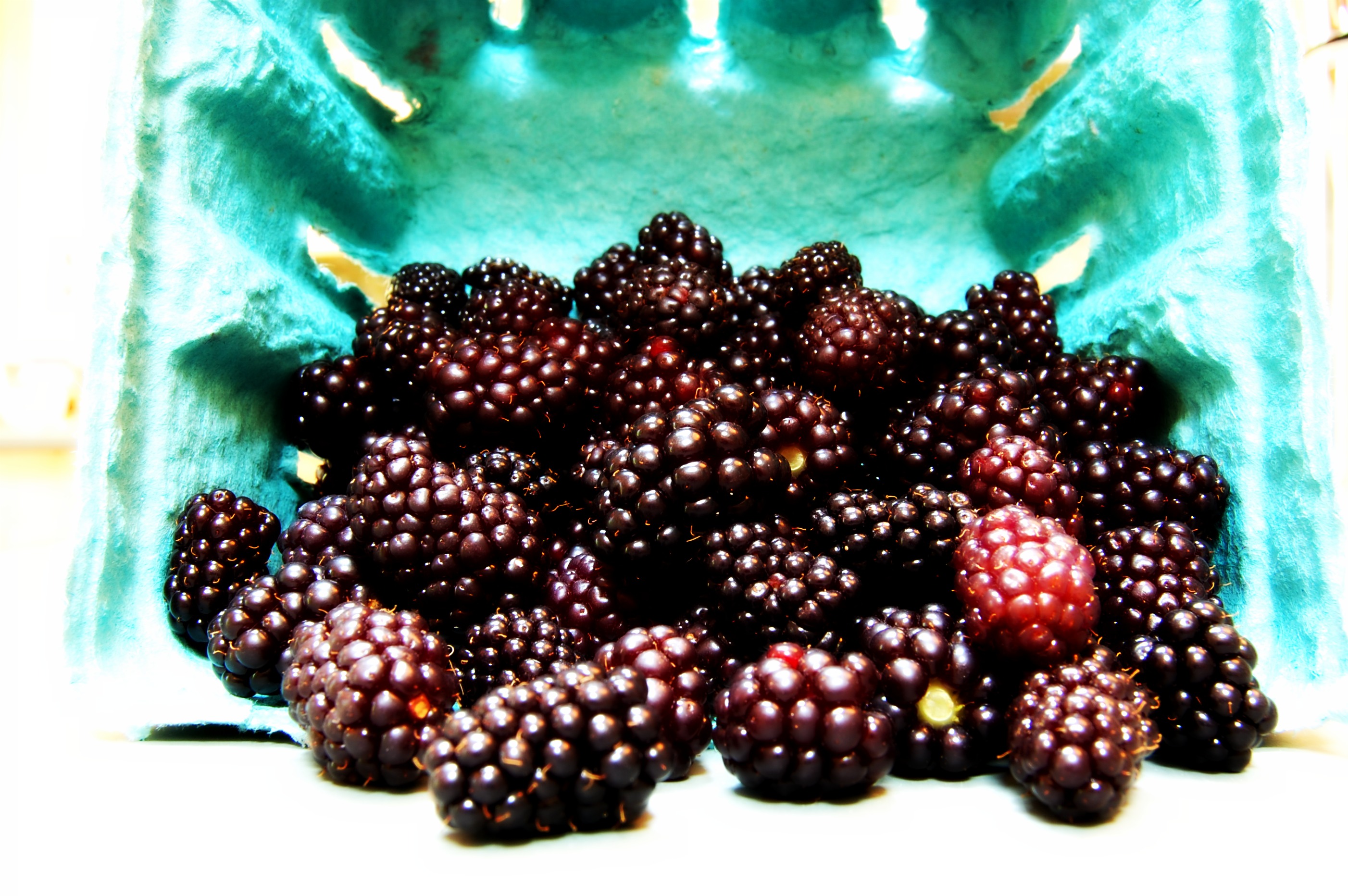Mixed Berry Pie
 August 13
August 13 I used to dislike making pie crusts, because my all-butter crusts were difficult to roll out. I thought that if I added additional flour while rolling, they would bake up hard and inflexible. So I would roll them between two sheets of plastic wrap. It works, but it's environmentally bad and makes frequent wrinkles in the crust, as if the crust had a bad case of pillow face.
So last year I learned to just throw a handful of flour on the crust. Et voila. It doesn't stick and it isn't tough. I also roll out the crust on a Sil-Pat, which I think is worth its weight in gold.
Mixed berry pie can be anything you have. Most summer berries are low in pectin, so you'll want to consider grating a peeled granny smith apple into the pie. The apple disappears, and the added pectin helps the pie gel up properly. (Unless you got started later than you thought and the kids are in their jammies already and you just have to serve dessert when its still warm. The pie will run everywhere, but you won't mind because it's warm berry pie.)
THE CRUST (Make Two)
1/2 Cup + 2 TBSPs All Purpose Flour
1/2 Cup Whole Wheat Pastry Flour
1 Stick Unsalted Butter cut into 10 pieces
Ice water standing ready
Put both flours and the butter pieces into the food processor and process until coarse like wet gravel. With processor running, drizzle 3 tablespoons of water into the processor and watch the dough. When it (soon) begins to ball together, stop processor. Pinch the dough in one spot to make sure it comes together. If everything looks too dry, you could add a few drips of water and process again.
Dump dough onto the silpat and gather into a ball. Refrigerate for 1/2 hour. Repeat for second crust. Preheat the oven to 450.
THE BERRIES
5 cups berries, washed dried and stems removed
1 apple, peeled and grated
1/2 cup sugar, or more to taste
1 tablespoon lemon juice
Combine berries with apple, sugar and lemon juice. Toss lightly with wooden spoon.
THE PIE
Remove dough from the refrigerator. Flour the sil-pat and your rolling pin liberally. Roll out the first crust, then drape it into the bottom of your pie dish. Pour the prepared fruit into the crust.
Roll out the second crust and drape it on top. Crimp edges, then cut six slits in the top crust which will allow the steam to escape as the fruit cooks.
Bake for 10 minutes. Reduce the heat to 350 and continue to bake for 45 minutes or until the fruit juices can be heard to bubble rapidly and the pie has turned golden brown.
Cool completely. (Even if people beg.)









